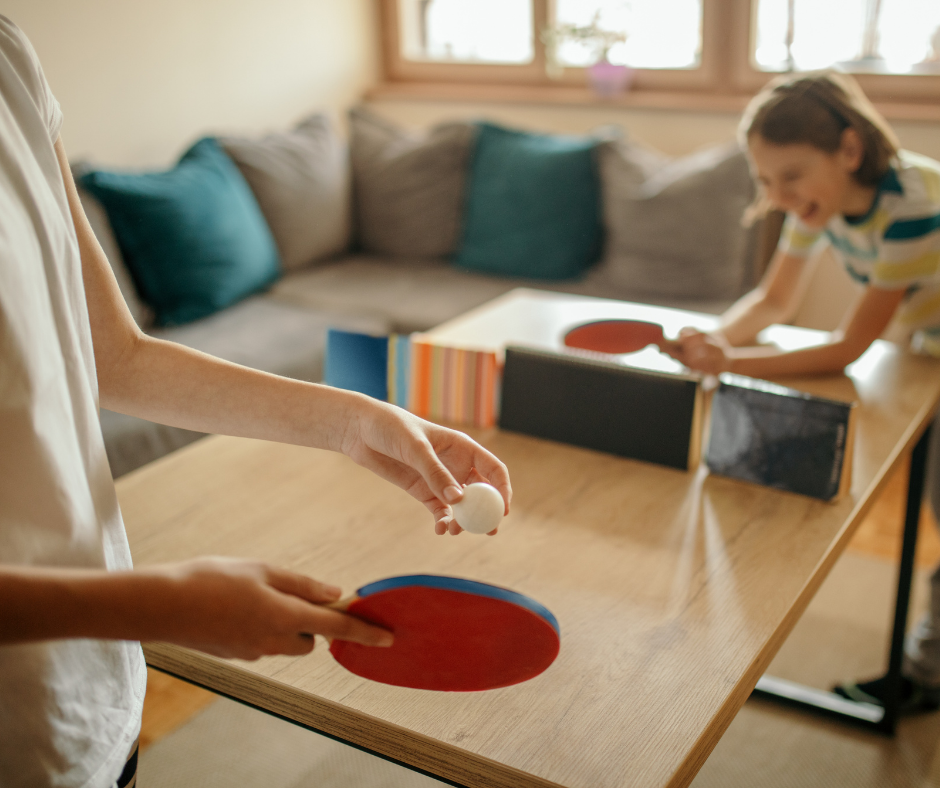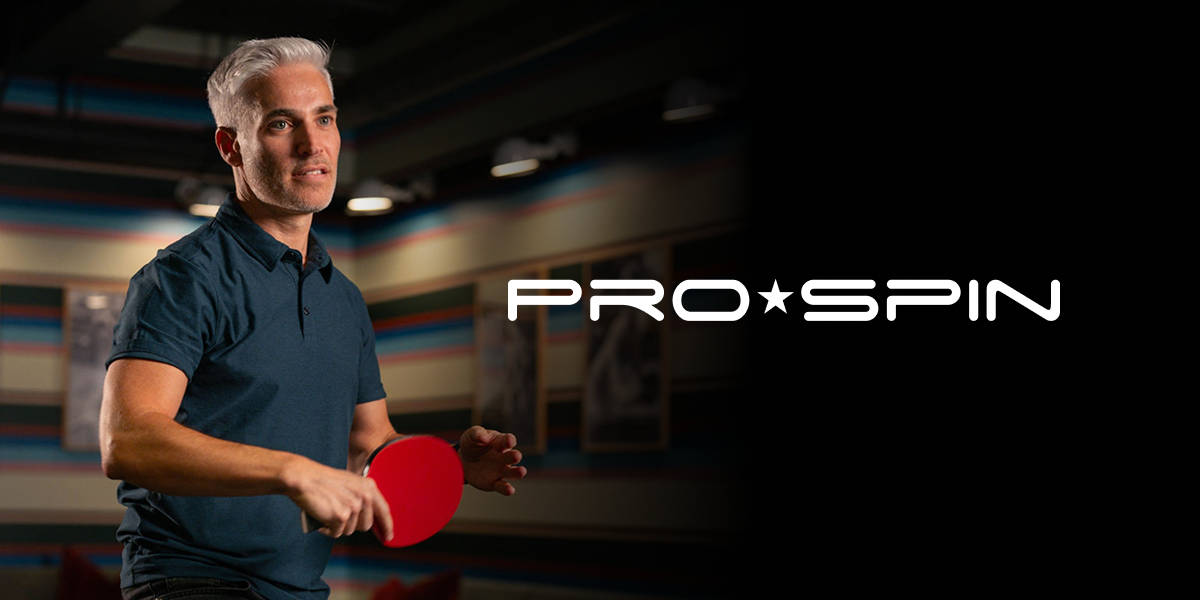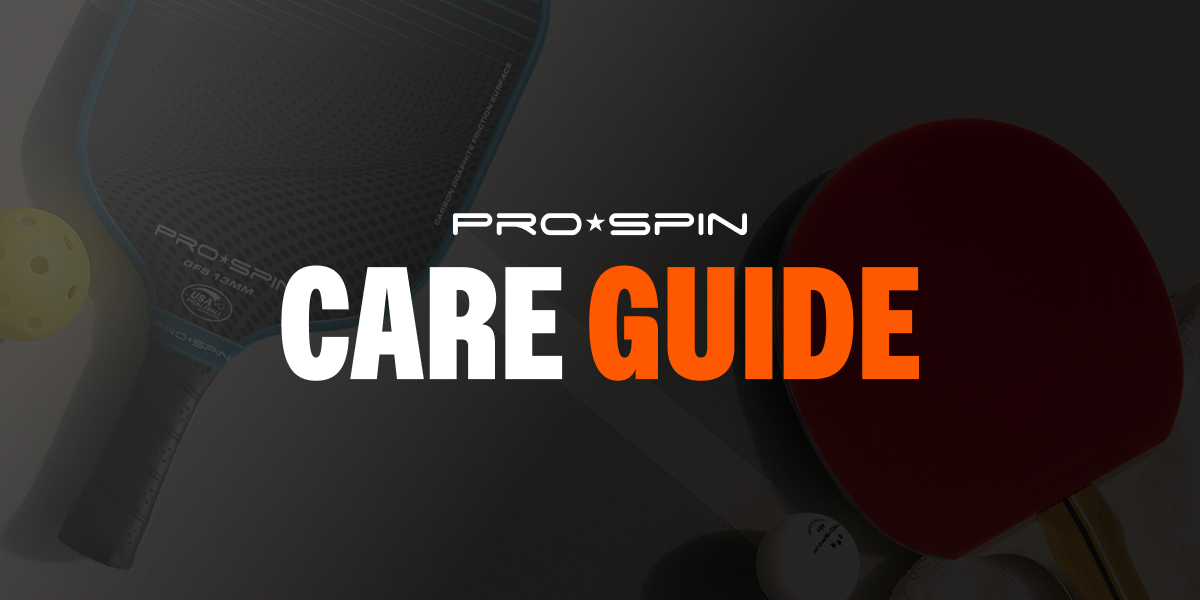4 Tips for Beginner Ping Pong Players

Introduction
It can be a bit intimidating watching very good ping pong players play. The power, speed, and spin they can deploy is awe-inspiring. But, even the best players in the world had to start somewhere. At some point, they were new to the game and picking up a paddle for the first time as well. The first thing you need to improve your ping pong game is the desire to get better. After that, here are 4 tips to help you out on your journey to becoming a better ping pong player.
Grip
You can have the most expensive paddle in the world, but it won’t make a difference if you don’t know how to hold it. There are many different ways to hold a ping pong paddle, but the two most common are the shakehand grip and penhold grip. We will be focusing on the shakehand grip as it is the most recommended for beginners.


It is called the shakehand grip because it resembles the shape your hand makes when shaking hands. The handle lays flat in the middle of the palm with the blade resting between the thumb and index finger. The bottom three fingers wrap around the handle while the index finger is extended on the backhand side and touches the edge of the rubber. The thumb completes the grip by wrapping over the top of the handle
The shakehand grip leaves the hand in a natural position which translates to a more comfortable hold of the racket. Because the blade is in an upright position, both forehand and backhand shots are equally strong. With all grips, make sure not to grip the paddle too tightly.
Serve
The serve is the most important shot in a ping pong match. It is the only time that you have full control of the ball and can determine exactly where it goes. A good serve can put your opponent on the defensive and allow you to dictate the rest of the point.
There are many different types of serves, each with their strengths and weaknesses. As a beginner, it can be daunting to learn them all. That’s why most coaches recommend focusing on learning one and figuring out how it fits into your style of play. Once you have mastered one, that is when you can start adding more serves to your arsenal. To start out, we recommend learning a backspin serve as it is generally the safest kind.
Footwork & Body Position
A common mistake for beginners is not moving your feet and therefore being out of position to make shots. Reaching and over-extending takes away power and control from your shots which makes it much easier for your opponent to make the shots that they want and take over the game. You should always be ready to move with your knees bent and weight on your toes.
In terms of body position, you want to ensure your knees are slightly bent with your dominant side foot slightly backwards. Keep your paddle in front of you with your elbow at a right angle and your forearm parallel to the ground. This is known as the Ready Position. This is the starting point for the majority of shots and you should aim to return to this position as quickly as possible after making a shot.

Basic Strokes
Now that we’ve gotten the ball in play, you need to learn to make some shots. In ping pong, there are 4 basic strokes that forms the foundation of more advanced shots: forehand drive, forehand push, backhand drive, and backhand push.
Forehand Shots
The Forehand Drive is the most basic ping pong shot but is an important attacking stroke. Played on the paddle-hand side, the Forehand Drive is used to put pressure on your opponent and put them on the back foot.
- From the Ready Position, rotate your hips backwards, shift your weight to your back foot (right foot for righties and left foot for lefties), and angle your paddle towards the ground.
- To strike the ball, unwind the rotation of your hips, shift your weight forward, and move your arm forward and upwards. You should be aiming to make contact at the top of the ball’s bounce.
- As you make contact with the ball, ensure you follow through and continue rotating until your paddle is in front of your body and your index finger is pointing at your opponent.
- Be sure not to over-rotate or over-extend when performing a Forehand Drive or you may end up losing control of your shot.

The Forehand Push is a defensive stroke that is mainly used to return short shots with backspin to your dominant side.
- From the Ready Position, angle your paddle upwards, slightly rotate your shoulders forward, and transfer weight to your forehand side.
- When moving to strike the ball, move your paddle forward and downwards utilizing your elbow and forearm for power. You are looking to make contact slightly before the top of the bounce.
Backhand Shots
The Backhand Drive is played when the ball is coming to the opposite side of your paddle-hand. For many beginners (and even some more advanced players), the backhand is a weak point. Ensuring that you can adequately return shots on your backhand side will drastically improve your results. Body position is extremely important when performing a Backhand Drive. You want to move yourself so the ball is in front of you. You do not want to be reaching out to your non-dominant side to make this shot.
- From the Ready Position, move your paddle back towards your stomach (ensuring it stays in front of your body), angle it downwards.
- When striking the ball, extend your elbow forwards and slightly upwards. Aim to make contact at the top of the bounce.
- Continue extending your elbow on the follow-through until your paddle is pointing in the direction of your shot.

The Backhand Push is an important defensive shot that all beginners should aim to master. Backhand pushes are more precise than forehand pushes, so you can use this shot to place your returns and force your opponent to move around the table. Like the Backhand Drive, you want to position yourself so the ball is in front of your body.
- From the Ready Position, angle your paddle face upwards and bring it back towards your stomach.
- As you move to strike the ball, push your paddle forward and slightly downward with your elbow. Aim to make contact just before the top of the bounce.
- For your follow-through, continue to extend your elbow and keep your wrist straight. Be careful not to over-extend your elbow.
Conclusion
With these tips, you are well on your way to upping your ping pong game. As with all things, practice makes perfect! Repetition will help build up your muscle memory which will lead to more consistent shots and more wins. Over time, these skills will become second nature allowing you to add more fancy shots to your repertoire. Most importantly, don’t forget to have fun! Good luck out there!






